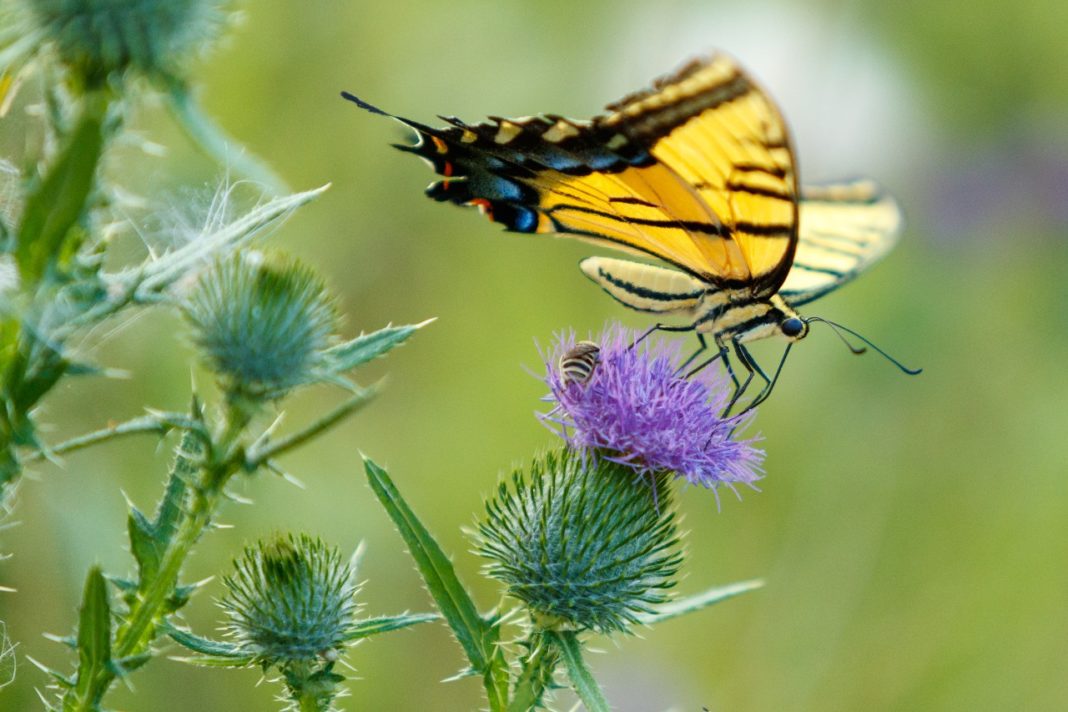Thanks to a particularly heavy monsoon, many Verde Valley residents are seeing a greater number of insects and other creepy-crawly critters around their homes and yards.
“There’s a lot of increased insect activity this time of year because in the desert, water is life. And so it’s a prime time for things to be out right now,” said Gene Hall, the insect collections manager for the University of Arizona’s cooperative extension.
The rains bring out a variety of insects and arachnids this time of year, and in the Verde Valley, residents can be on the lookout for an increase in beetles, cockroaches, moths, mosquitoes, scorpions, spiders, ants, millipedes and flies, among many others.
While some insects, like mosquitoes, are more common this time of year because they need excess standing water to reproduce, others are coming out simply because there is a greater abundance of food.
Not only are trees, shrubs and other leafy plants coming to life in the monsoons and providing plant-eating insects with more to munch on, but bugs that eat other bugs, like spiders, are also thriving with the excess number of insects.
Not only that, but animals like bats, lizards, birds, frogs and fish that eat bugs are benefiting from the large volume of bugs as well.
“All these organisms are really tied to each other,” Hall said. “If things are extremely dry and hot and the plants don’t do well, then the insects that feed on those plants don’t do well either. Everything’s really connected with each other. … So, when parts of that get impacted on different levels, then that kind of has a domino effect on how it impacts the other organisms associated with that.”
Monsoons aren’t the only thing bringing bugs out. This time of year also happens to be mating season for species such as tarantulas, ants and termites, Hall said.
After a rainstorm, ants and termites participate in what’s called a “nuptial flight” in which hundreds or thousands of the insects will fly together in a swarm and mate, then return to the ground to start new colonies.
While the abundance of bugs may seem “icky” to some, entomologists are glad to see these creatures making a comeback after several dry years, Hall said.
In fact, over the last few years, the insect population has decreased dramatically to the point where some species were not noticeable whatsoever.
One particular species that scientists are especially glad to see thriving is the native bee population.
Arizona is home to over 1,000 native bee species, according to the Tucson Bee Collaborative. In fact, Arizona has one of the highest numbers of native bee species in the world, Hall said.
“Those bees are depending on the plants and such,” Hall said. “So, when the plants are doing well and the flowers are doing well, then the bees are doing well.”
A healthy bee population, in turn, helps pollinate many different kinds of plants, including the crops that humans eat.
Bees aren’t the only interesting population of bugs in Arizona. Hall said the state has one of the most diverse bug populations in all of North America, bringing researchers and observers from around the world to study the insects in the area.
The University of Arizona Cooperative Extension reports there are around 15,000 species of identified insects alone in the state, of which only around 5% are harmful to humans.
So, Hall suggests that instead of being repulsed by these tiny critters, people should try gaining an appreciation for them.
“Everything’s all connected together in this great web of life, and if you can take the time to watch these animals doing what they do, you could maybe learn something you didn’t know about them,” Hall said. “They’re not out to get us or to make our lives miserable. So, I say just take the time to appreciate the diversity of life around us because we’re all connected here together.”






















